12 Trendy Advanced Construction Materials You Should Know in 2024

Table of Contents
More often than not, materials and technology are viewed as two distinct entities in the construction industry. However, we have now taken a step forward to combine regular materials with technology for producing advanced construction materials. In addition to being highly efficient, these new materials are also environmentally sustainable.
With the changing environment and technology, it’s also important to stay updated with the materials we are using to construct future-forward structures. So without further ado, let’s explore the top 10 advanced construction materials you should know in 2024.
Why do we need advanced construction materials?
What comes to mind when you hear the term ‘construction materials’? Perhaps timber, steel or bricks. How about light-generating concrete, bioplastic or strand rods? These new materials for construction are innovative, enabling the architects to create designs closer to their visions and engineers to build structures in never-before-seen forms and construction techniques. Many of the construction materials we rely on today are made from both non-renewable and renewable sources. Non-renewable materials pose the risk of depletion sooner or later in the future. Renewable materials fare better although we may end up harming the environment in the process of obtaining these materials from nature.
These advanced building products and materials have been developed with intensive research and analysis to solve various issues faced in construction today. Many of them are not yet widely used in the industry but we can expect this to change as the materials become more affordable and accessible.
12 Advanced Construction Materials For The Future
1. 3D-printed graphene

3D-printed graphene (Source: https://news.mit.edu/)
Graphene is a strong, lightweight material and one of the unique building materials used often in microchips and sensors. Several researches have also proved that adding graphene can enhance the strength of a material. Unfortunately, it is expensive and hence, it has not been widely used despite its capabilities. However, researchers have now managed to develop 3D-printed graphene using graphene oxide hydrogel as the resin for the printer. This, however, is not a final product. 3D-printed graphene can be used to reinforce concrete. Trials have begun for the on-site testing of 3D-printed, graphene-reinforced concrete at train stations by UK-based civil engineering company Skanska Costain Strabag JV.
2. Light-generating concrete
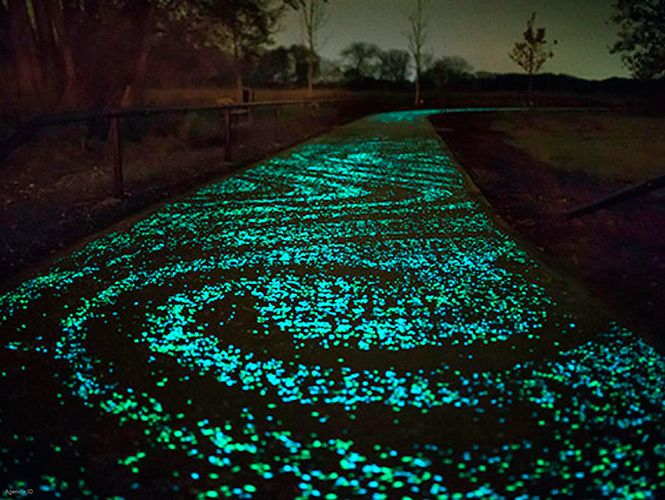
Light-generating cement used for a bicycle lane (Source: www.archdaily.com)
Light-generating concrete or cement is non-flammable and able to reflect light, hence the name. This material is one of the advanced materials in construction and is also known to absorb solar energy to ‘charge’ and emit light in the dark. Proven to be energy efficient, it has been used to illuminate bicycle lanes and roads in Mexico, where its research took place. As it is quite similar to the regular cement already in use, it can find application in the construction of many other structures like facades and parking lots.
3. Cross-laminated timber (CLT)
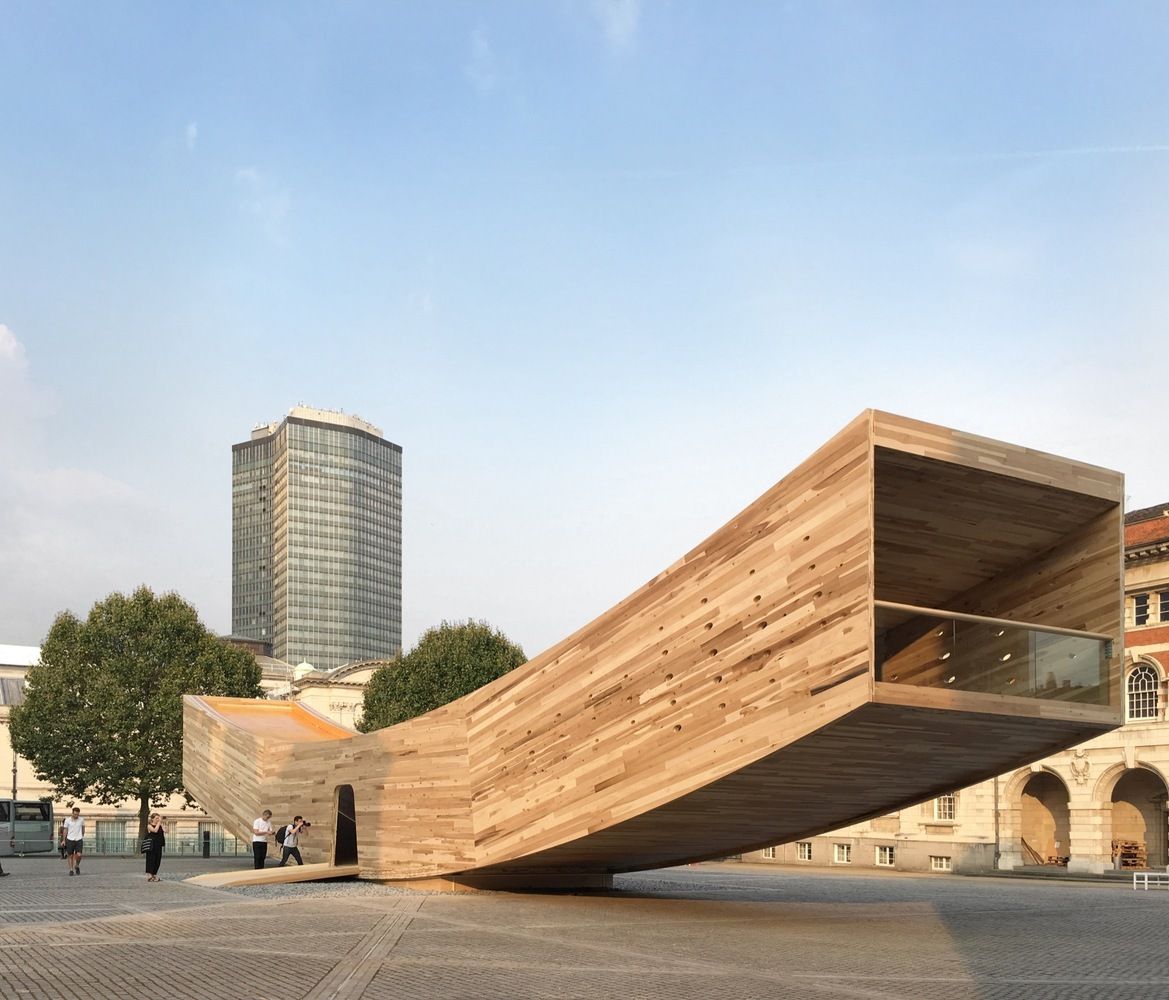
The Smile by Alison Brooks Architects (Source: www.archdaily.com)
Cross-laminated timber is a type of mass timber (man-made or engineered wood) that is bound in layers. As the name suggests, cross-laminated timber is developed in planks by glueing timber pieces in layers, each layer being perpendicular to the previous. CLT is known for its strength as well as for being lightweight. It is easy and quick to construct with CLT since it can be manufactured off-site and assembled on-site. Using CLT alongside technology that provides precise drawings and models, like BIM (Building Information Modelling), can reduce waste and labour needed for construction.
Timber is a favourite of many architects as a sustainable material. Find out who is well-known for using timber in 10 Sustainable Building Materials and Famous Designers Who Use Them.
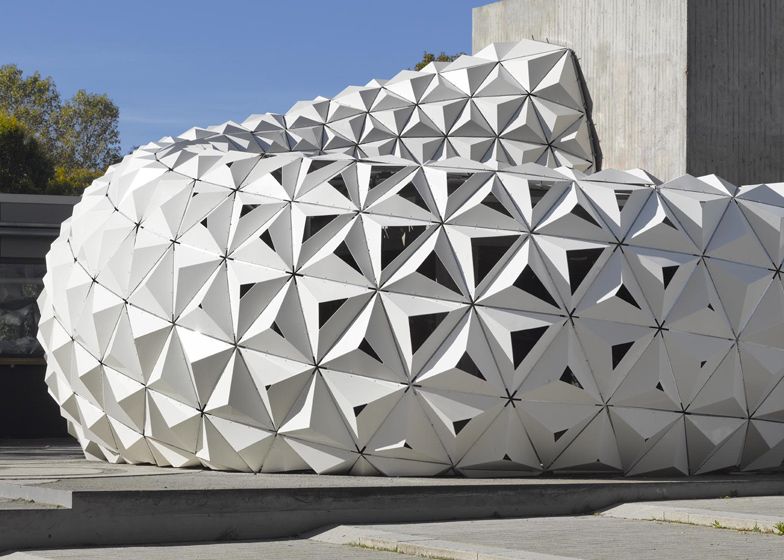
ArboSkin Pavilion
News about plastics causing extensive damage to the environment is hard to miss. Not only do we need to clean them up, we also need to reduce the use of non-biodegradable plastics. A viable solution is bioplastic. Bioplastic is an advanced building material usually made from a plant-based source. When disintegrated, it does not reduce the quality of the soil or harm the environment. Currently, bioplastic is not yet a common construction material but has been used for food containers and smaller household items. The ArboSkin pavilion project by Stuttgart University’s ITKE (Institute of Building Structures and Structural Design), built from bioplastic with 90% renewable materials, proves that bioplastic has immense potential as one of the latest construction materials.
5. Mycelium

The Circular Garden - Mycelium structure by Carlo Ratti Associati
Mycelium is the root-like structure of a fungus and has been a topic of interest for the past few years in the construction industry. Being an organic material, it is compostable and has very little, if any, negative environmental impact, making it one of the most ecologically sustainable materials. Moreover, it is resistant to mould and fire, and has been tested as a source material for bricks.
Want to know more about sustainable construction materials?
Read: 11 Best Sustainable & Eco-Friendly Building Materials in Use Today
6. Self-healing materials
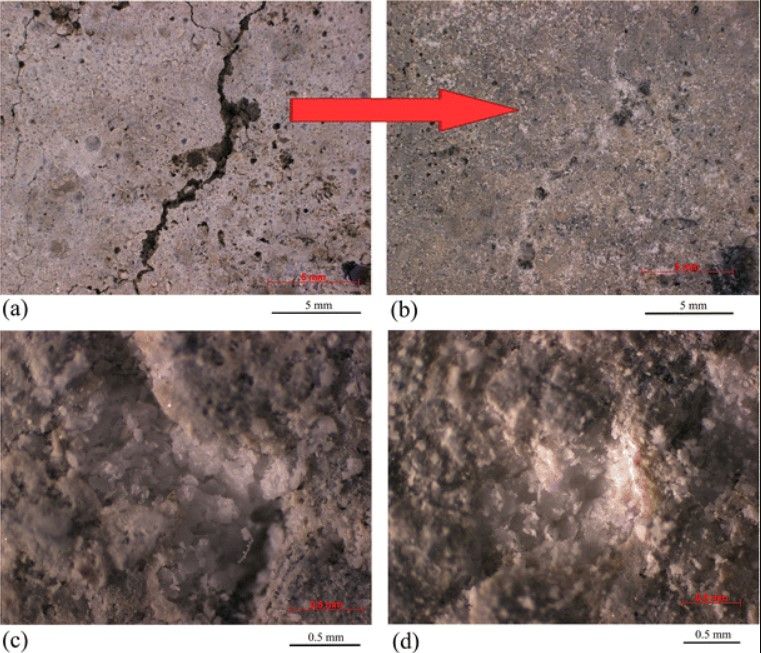
Self-healing concrete
We have evolved from using traditional materials such as timber to using concrete as a construction material so frequently that we now live in a concrete jungle. Researchers have been developing the next stage of concrete for construction to counter its vulnerability to cracks. Yes, nothing lasts forever, but with the right materials, we may just be able to extend the lifespan of our built environments. That is, indirectly speaking, the purpose of self-healing materials including concrete; fibres or natural capsules that release an adhesive substance are added to the concrete mix, which then heals the cracks. For example, TU Delft is developing a prototype of regenerating bio-concrete using a special type of bacteria that, through a series of chemical reactions, restores the cracks in the concrete.
7. Strand Rods
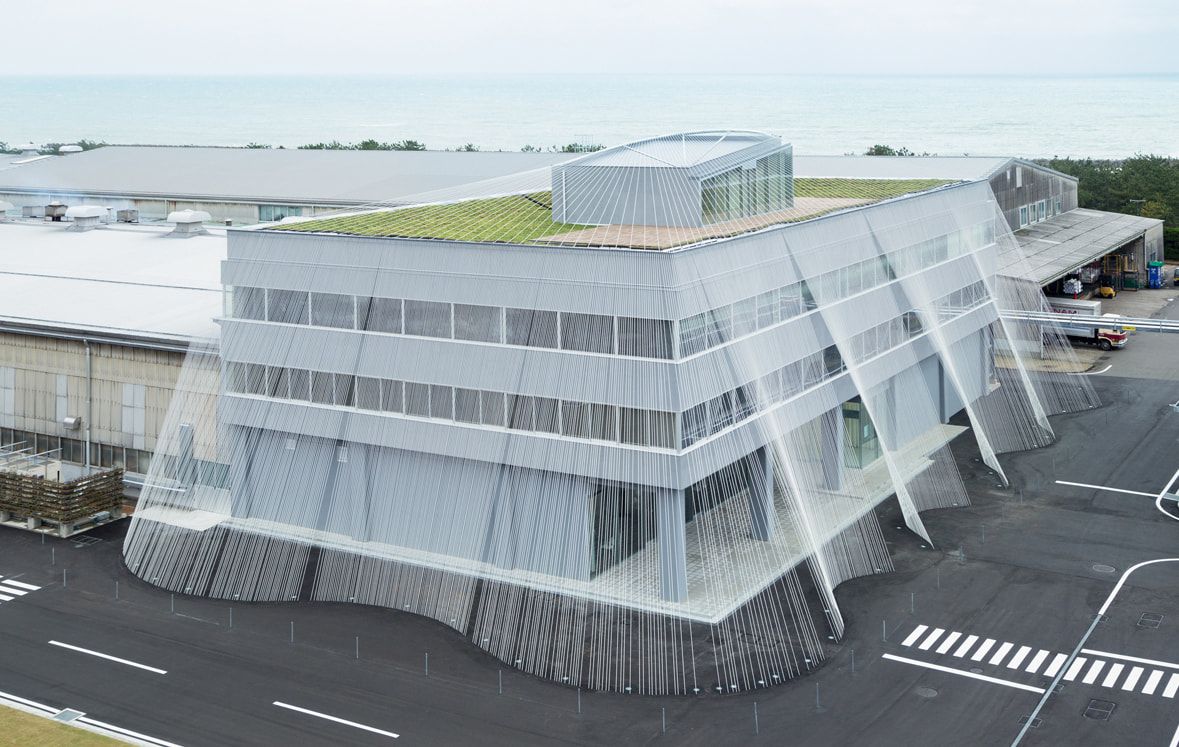
Strand rods in action
Strand rods are manufactured using carbon fibre composites in both synthetic and inorganic fibres and thermoplastic resin. It has been developed and tested in Japan to create a lightweight seismic reinforcement system. It is much lighter than metal rods of the same length and strength while being equally effective. As the lightest seismic reinforcement, it has high tensile strength and is also aesthetically pleasing. The first use of such material can be seen in the facade of Kengo Kuma’s work for Komatsu Seiren’s head office.
8. Carbon fibre
World's Largest Floating Carbon Fiber Roof
Made of thin carbon strands woven together for a fabric-like composition, carbon fibre is generally considered to be an alternative to steel that is lighter and stronger.
Some of these fabrication techniques rely on generative design methodology and tools.
Read more about it here - Generative Design in Architecture Explained
9. Translucent wood
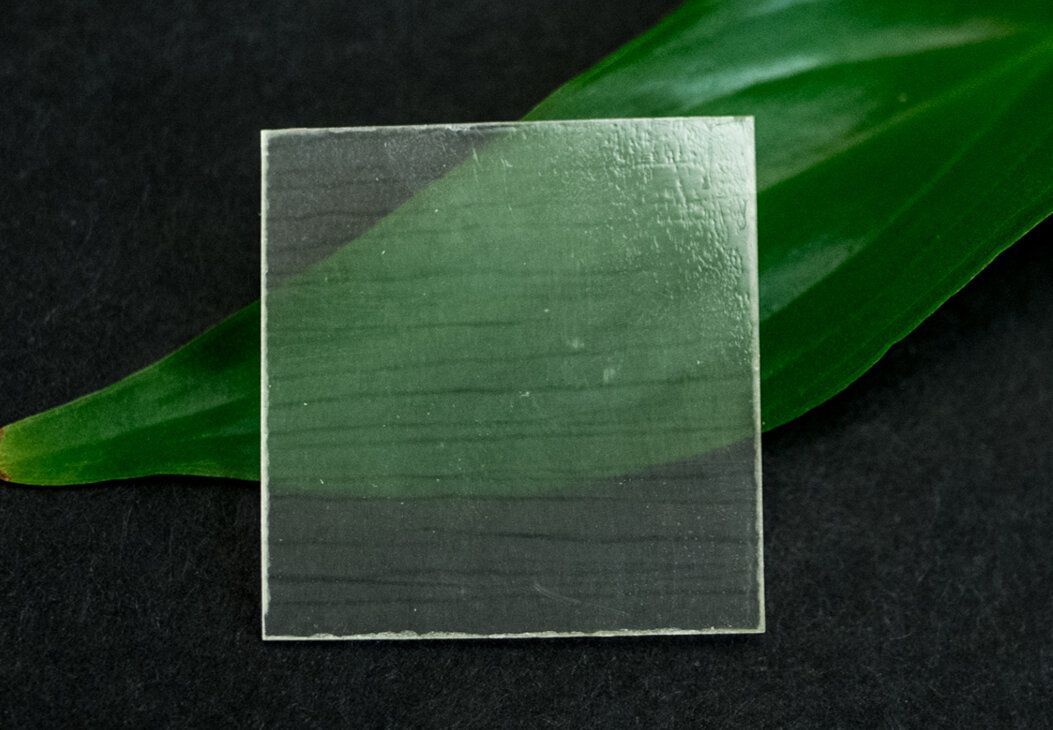
Translucent wood
Have you ever wondered if wood can be any other colour than brown? How about clear wood? Through research and innovation, we now have translucent wood that is almost 90% clear. The wood is made translucent with the aid of a chemical that strips away its colour while keeping many of its natural properties intact. It is said to be energy efficient and has the potential to be a good alternative to glass and plastic as it is renewable and has low thermal conductivity.
10. Transparent aluminium
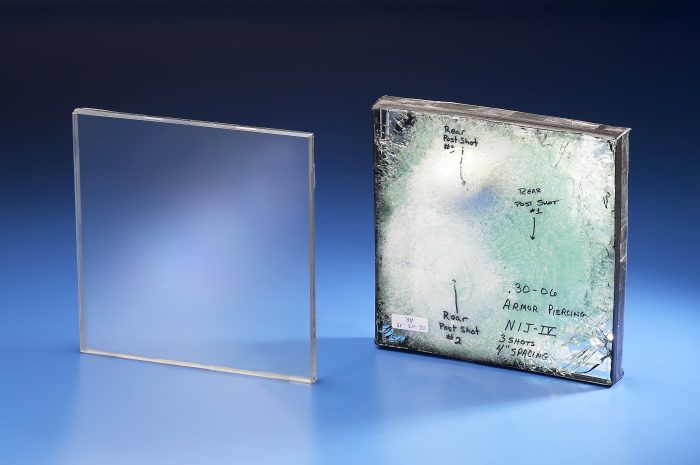
Transparent Aluminium
This material has been hailed as a material of the future, having been featured in the 1986 Star Trek movie! The difference between the movie version and the real material we have now is that in the movie, transparent aluminium is made of pure elemental aluminium while in the real-world transparent aluminium is a ceramic alloy. Extremely durable and believed to be resistant to corrosion and oxidation, it is already in use as bulletproof glass and in other security systems. The downside is that it is expensive, much more than normal bulletproof glass. However, when the price drops, we can expect a far wider use of this wonder material for windows, facades, or even underwater structures. It may just turn out to be the cost-effective and long-lasting material our construction industry needs today.
11. Bendable/Flexible Concrete
Flexible or Bendable Concrete
Flexible or bendable concrete is a remarkable innovation developed by Prof. Victor Li at the University of Michigan. It is an Engineered Cementitious Composite(ECC), that exhibits ductile properties rather than brittleness due to altered material composition, unlike the conventional concrete.
Fibres serve as reinforcements in it, enabling it to strain and harden after cracking, unlike fibre-reinforced concrete where cracks develop upon fibre rupture, reducing stress-bearing capacity. Flexible concrete distinguishes itself with high fracture toughness and damage tolerance, offering promising applications in construction.
12. Artificial Spider Silk
Artificial Spider Silk
Artificial Spider Silk is one of the most advanced materials in construction and an intriguing material in nature. It can be stretched to quite a length before it breaks. It was developed by Researchers from Cambridge when they were trying to create a material that mimics real spider silk’s strength and energy capacity. It is manufactured from hydrogel, which is 98% water. It consists of silica and cellulose fibres that form strong fibres once the water evaporates. And here’s a fun fact, it is possible to create artificial spider silk in room temperature, which makes it easy to produce it on a large scale. Furthermore, it is 340 times more durable than concrete!
These new and advanced construction materials have opened up new possibilities in the AEC industry for a more sustainable future with efficient construction and less pollution. Even though some of these materials may not be widely used yet, technological innovation will no doubt change the scenario in the near future.
You can also be a part of the evolving AEC industry by upskilling yourself in the transformative technical skill called Building Information Modelling(BIM). Novatr specialises in the BIM Professional Course for Architects V2.0 as well as the BIM Professional Course for Civil Engineers, catering to the skills that will make you industry-relevant for the future.
In just 9 months and 8 months respectively, you can upskill in more than 10+ BIM software and industry workflows and open a door of opportunities that will give your career the boost it needs. So don’t wait, head to your new career opportunities today and dare to disrupt!
To learn more about current industry trends and demands head to our Resources page.

 Thanks for connecting!
Thanks for connecting!

-1.png)
.png)
.png)




.jpg)
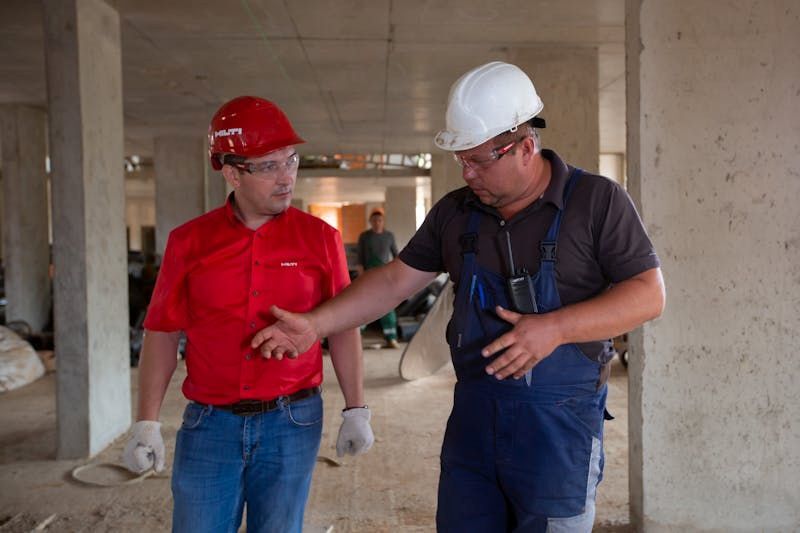
-1.png)

